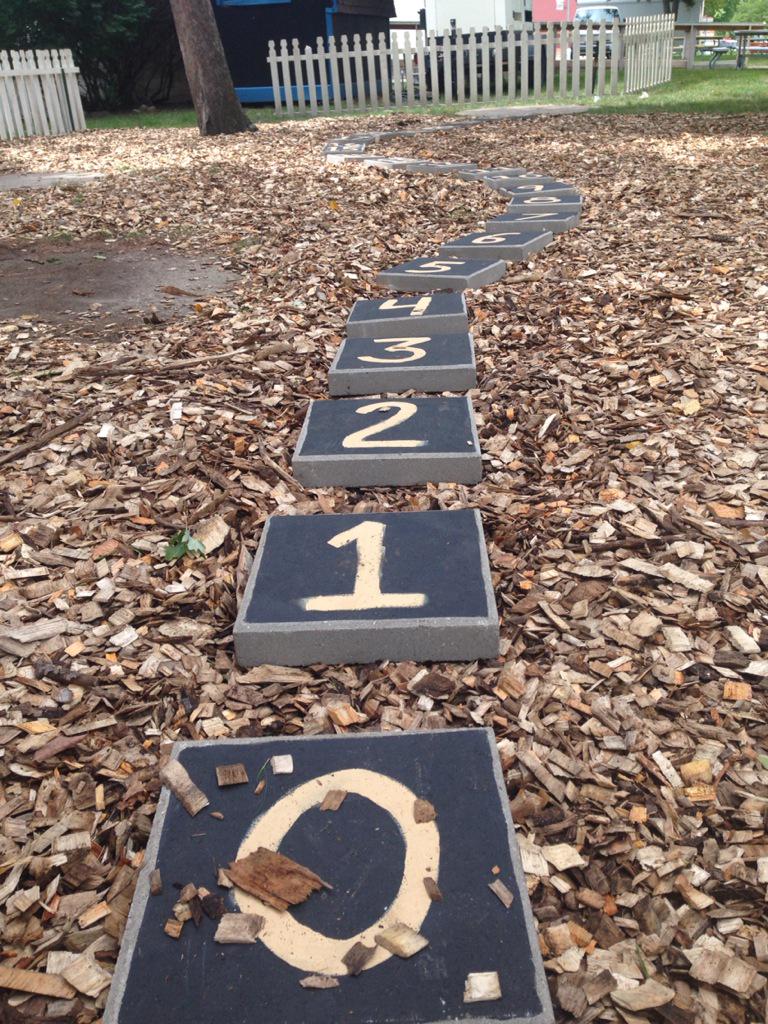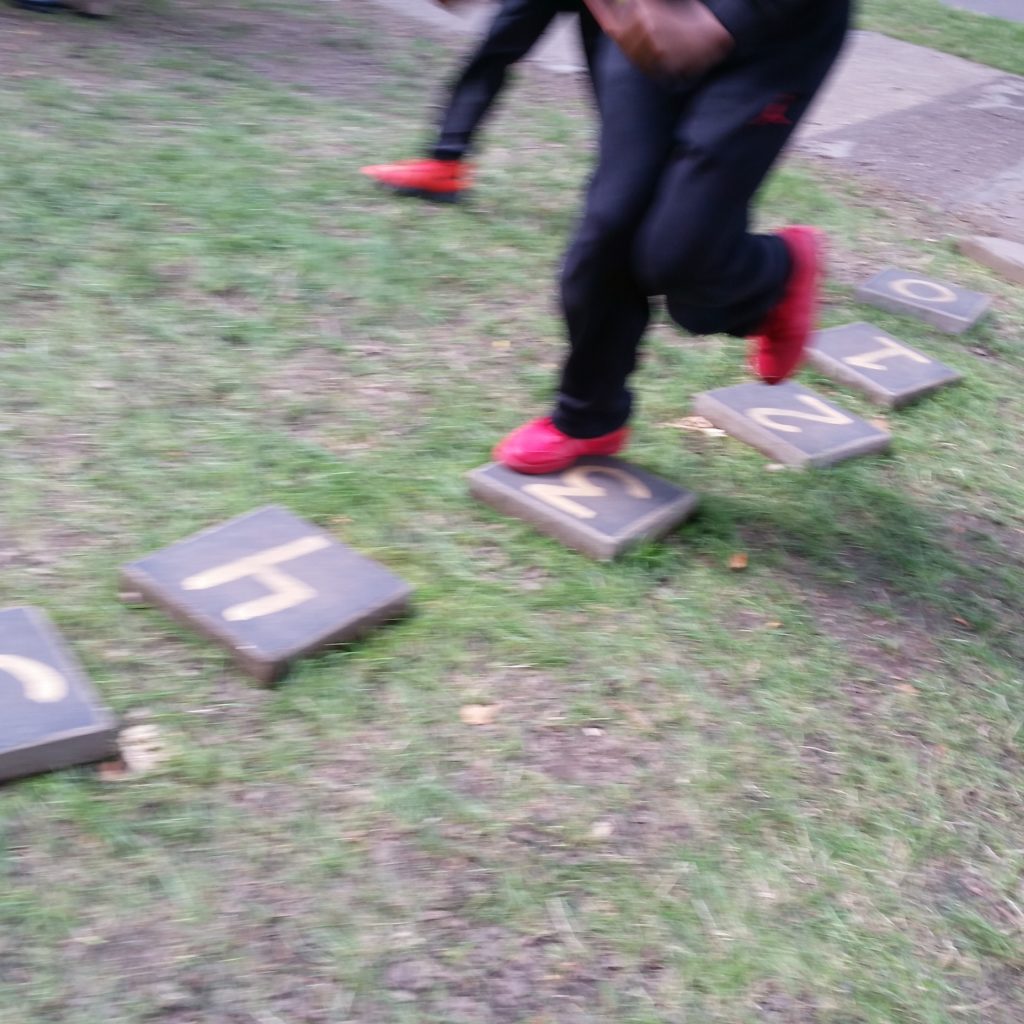At Math On-A-Stick, we have a series of stepping stones, numbered 0 to 23, and winding their way from the sidewalk into the heart of the space.

It is delightful to watch strollers roll in, toddlers getting unbuckled, and then jumping their way down the stepping stones. It is obvious to them what these stones are for. Starting at 0, and jumping from one to the next—sometimes while counting out loud, sometimes not—is a very good time.
But it’s not just toddlers who play on the stepping stones. Folks of all ages have fun. Here’s a short list of a few creative ways people have played on the stepping stones:
- Counting up and counting back. Go from the beginning to the end, counting out loud. Then return while counting backwards. For extra fun, count backwards while walking backwards.
- Skip counting. Starting at 0, jump to 2, then 4, etc. ending on 22. Go back to the beginning and repeat, starting on 1 in order to hit all the stones you missed the first time.
- Jump sequences. 1, 2, 4, 8…how long can you keep this up before the gap is too big? Jump the Fibonacci sequence. (But wait! Will the sequence be the stones you land on, or the sizes of your jumps?)
- Make up a physical challenge. A couple of boys established a challenge one year in which they hopped two stones forward, one stone back. It took many tries to succeed. And then…how many hops did it take?
In the third year of Math On-A-Stick, we had the idea to add a stone before 0, and—importantly—to leave it blank. You can see that stone at the very edge of this photograph.

Most of the time, nothing special goes on with that stone. But if you keep your eyes open, you will sometimes see a child counting back from 23, landing on 0, and then pause to look thoughtfully at the blank stone.
When I see that moment happen, I stroll casually over and say something like “There’s nothing on that stone…what do you think should be on it?” A sample of the answers I’ve heard (each more than once), and in no particular order:
00
If 0 is what comes before the numbers, then double zero must come before 0 and the numbers.
-1
Not much to say about this one except that it’s sort of rare when you talk with children under 10 years of age.
-0
0 is the first positive number, so -0 is the first negative number.
A
The numbers go one direction, the letters go the other.
Z
The letters END so that the numbers can begin. They must have started invisibly somewhere across the street and ended here.
Start
Self-explanatory
Blastoff
Depends on which direction you’re thinking about the stepping stones being structured.
23 or 24
Like a video game—go off the edge of the screen and reappear on the far edge. See also: modular arithmetic.
∞
Evidently, it’s not a number line; it’s a number circle.
—
Notably, pretty much everybody has an idea about what should be on that stone.
What we learn from this variety is that there are many possible ways of structuring the number line. When I taught seventh grade and was charged with introducing the left-hand side of the number line, my perspective was that labeling the spaces to the left of zero is the only logical way to go about it. Not that it was obvious, but that there really weren’t any other options if you sat and thought about it.
Now I see that this is clearly untrue.
There are lots of ways to structure the number “line”—some of which lead to new and important mathematics! I have new empathy for learners encountering this particular structure we teach for the first time, and for the challenges involved in finding your way around in it.
Stepping Stones FAQ
What stones did you use? Basic 12-inch pavers from a home supply store.
What did you paint them with? Just latex house paint that was sitting around in my garage. It has survived five iterations of Math On-A-Stick with hundreds of kids jumping on them all day long for 12 days each year.
Why do they go to 23? Because two dozen seemed like a nice number of stones to buy, and if you start at zero, two dozen stones gets you to 23.
Why do they start at 0? Zero is so often left out of the counting fun, and yet it’s a really important number! Plus, if you start at zero, then the stone you’re on tells you how many steps you’ve taken. Twenty-four stones; twenty-three steps in between them.
